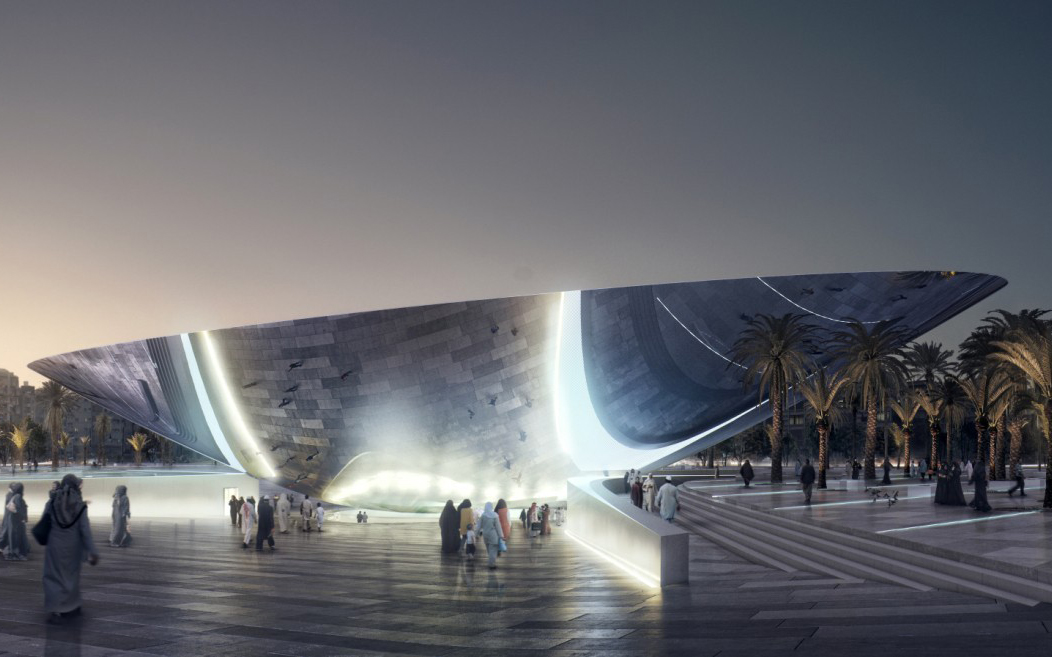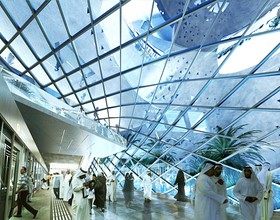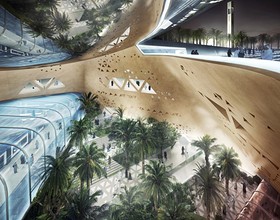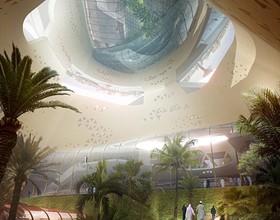RIYADH METRO STATION
-
The Qasr Al Hokm Downtown Metro Station will become an icon for the renaissance of the city of Riyadh. Building upon the principles of sustainability, the station highlights a new consciousness of this generation, to build a future that recognizes the value of natural resources and its important role in urban regeneration, based upon the principals of sustainable urbanism.
The Downtown Metro station is designed as an urban plaza with a large canopy providing shade to the surrounding public spaces and channeling daylight down into train station below ground.
The polished stainless steel canopy functions as a landmark signaling the station's entrance.
Through the reflective canopy, the levels of the metro are visually linked, like a periscope, reflecting the outside inwards and the inside outward. The canopy rests on a large inclined wall, defining an exterior void which carries indirect light down, whilst acting as a unifying element and reference space in the building.
The two metro lines span through this void space in glazed tubes, giving them a strong presence, clarity and sense of wayfinding. A steel and glass facade separates the subway lines to the Metro station's central atrium.
The plaza area is proposed treated as a homogenous limestone surface, stretching to the very edge of the site, clearly identifying the whole space as a public, pedestrian space. The plaza is given a human scale through the planting of palm trees in a linear pattern following the direction of the mosque and Mecca. Irrigation channels delineate the plaza floor, these serve as a flood-and-drain watering system for the trees, and as a subtle water feature during periods of the day.
The atrium features an accessible garden at the bottom, an unexpected element in the underground station. The garden is accessed from the Red line platform and the Blue line platform, and allows passengers to wait for their train whilst seated in the shaded lush garden. The inside surface of the canopy is to be covered with a daylight harvesting system. Based on a fiber optic system, daylight is channeled to light fittings in the below-grade levels. In this manner lighting can be maintained during the day time without using energy and without bringing heat into the building.
Photo credits: Snøhetta.
Countries: SAUDI ARABIA
Categories:
Designer:
Status: WORK IN PROGRESS
Beginning of Construction: 2012
Completion Date: 2020
1870 Projects









